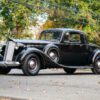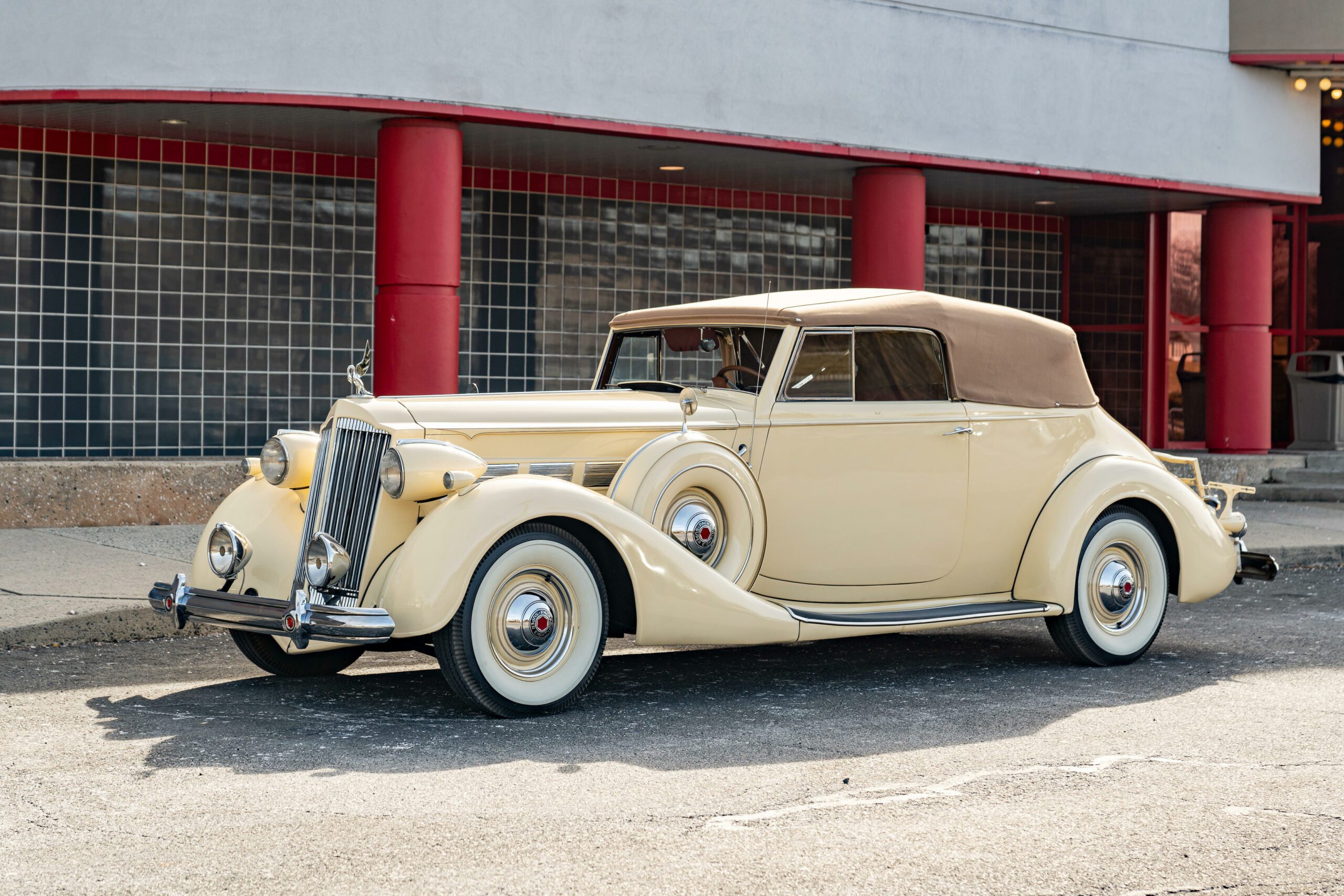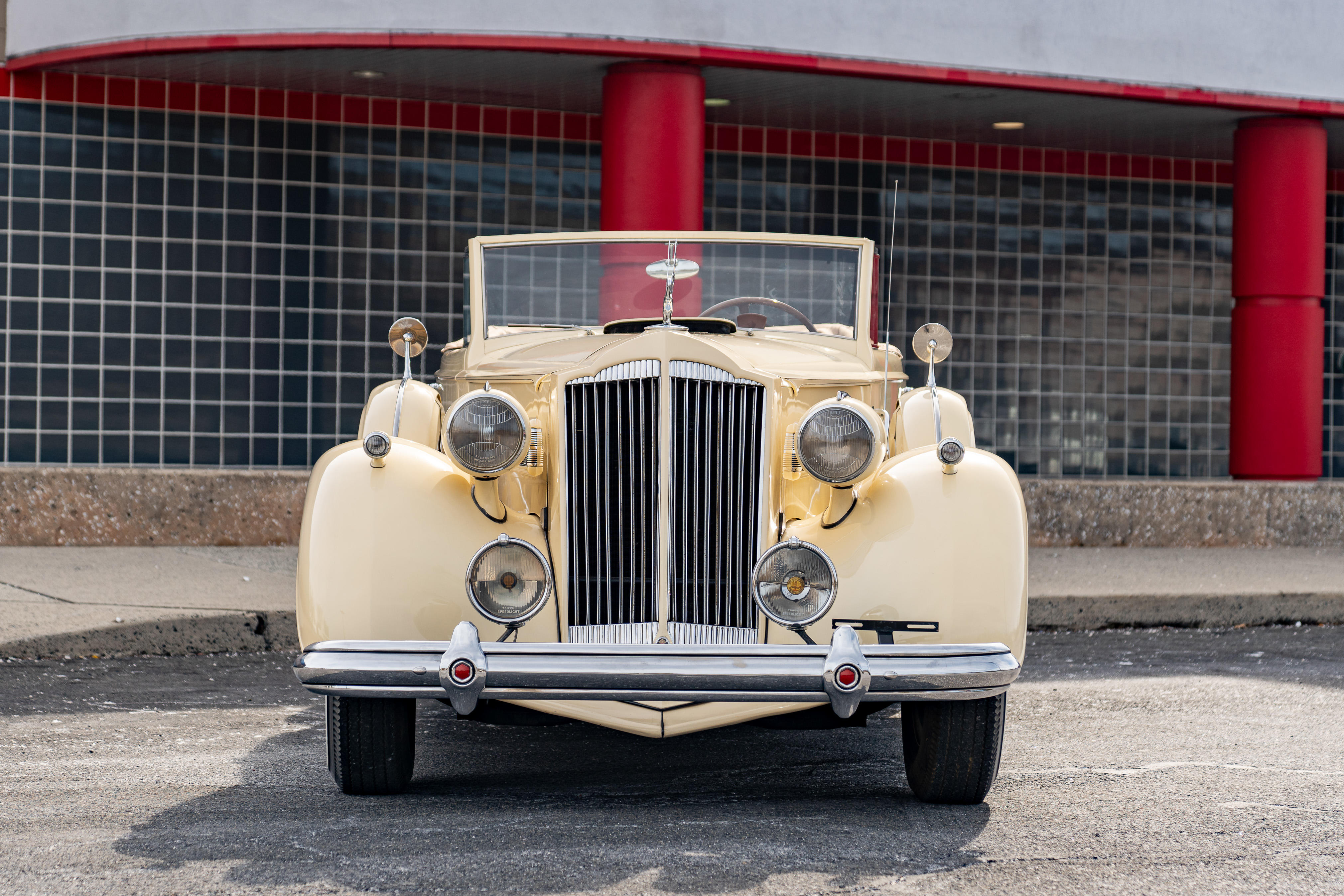Renowned for its unwavering commitment to quality, the Packard stood as an indisputable symbol of excellence among American automobiles in the pre-war era. In 1932, Packard unveiled a groundbreaking design that epitomized perfection, although it proved to be a fleeting moment of triumph as industry priorities swiftly evolved.
The market demanded vehicles that were quieter and provided smoother rides, while drivers sought cars with lighter steering and enhanced braking capabilities. Consequently, wheels began to shrink in size, with the majestic 20-inch wheels swiftly giving way to 17-inch counterparts. Fenders were modified to conceal the void left by the reduced wheel size. These mechanical transformations occurred rapidly, leaving Packard grappling with the challenge of adapting their entire vehicles to these changes.
Until 1934, the bodies were primarily designed for the cars of the earlier 1930-32 era, and the fenders and front ends were modified to blend the two styles. However, in 1935, Packard introduced a new range of bodies and fenders that more effectively embraced the lower frames and smaller wheels.
Unfortunately, Packard’s choice of radiator shell designs for the 1935 models did not meet the expectations associated with America’s premier brand. The cars failed to deliver the striking appearance that was anticipated. However, in 1936, everything fell into place perfectly. A beautifully designed front end harmoniously combined with well-proportioned bodies, complemented by fenders boasting exquisite lines and elegantly curved lower edges.
By the time the Model 1507 rolled off the production line of Packard’s Detroit factory in 1937, the eight-cylinder Packard was in its 15th series (excluding the 13th series). The significant development for ’37 was the introduction of the 5.2-liter engine in the larger Eight models, which now featured independent front suspension and hydraulic brakes. Since 1933, all Packards had been equipped with synchromesh transmission. Furthermore, the radiator was tilted back at a 30-degree angle, lending a more streamlined appearance to the vehicle.
Source: Bonhams












